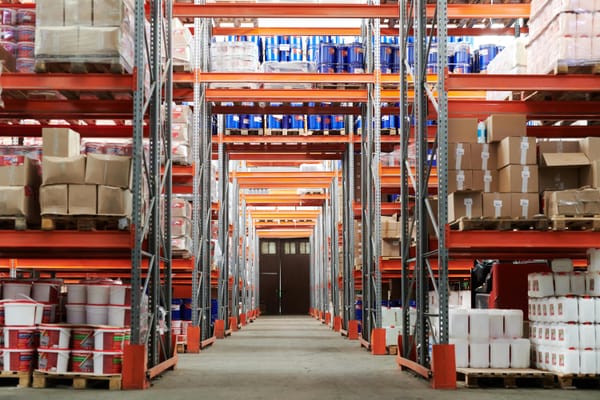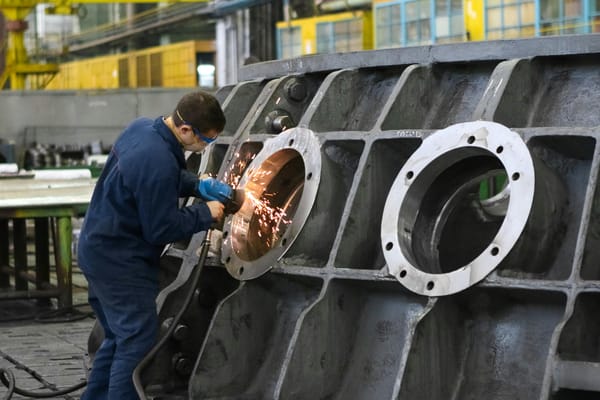Manufacturers Optimized for Efficiency are Failing When It Matters Most
For decades, manufacturing leaders have treated lean, hyper-efficient operations as the gold standard. Every process optimized. Every ounce of waste eliminated. Every cost cut.
The problem? Too much efficiency creates rigidity.
Instead of driving competitive advantage, it is leaving manufacturers:
- Vulnerable to supply chain shocks – As seen in the 2020 semiconductor crisis that cost automakers 7.7 million vehicles1 and two hundred ten billion dollars in lost revenue.
- Slow to adapt to market shifts – Companies with over-optimized operations struggle to pivot when disruption hits.
- Blind to risk – The obsession with cutting costs leads to underinvestment in resilience, buffers, and agility.
The result? Manufacturing leaders are realizing too late that their efficiency-first mindset has made their business fragile.
Efficiency Taken Too Far Leads to Disaster
Automakers & Just-in-Time Inventory
- Just-in-time was meant to eliminate excess inventory. It worked until it didn’t.
- When chip shortages hit, production halted. Most automakers had no contingency plans and were forced to shut down factories.
- Toyota, the exception, had built intentional slack after learning from the 20112 earthquake. It kept running while others collapsed.
Boeing’s Cost-Cutting Culture
- A legendary engineering company became a case study in what happens when efficiency overrides quality.
- Decades of aggressive cost-cutting eroded Boeing’s safety culture.
- The 737 MAX crisis3: two crashes, global groundings, and billions in losses were a direct consequence of chasing efficiency at the expense of resilience.
3M’s Innovation Failure
- Six Sigma. Workforce reductions. Standardization.
- It looked great on paper until 3M4 realized its legendary innovation engine had stalled.
- Too much efficiency had eliminated the creative slack that once drove breakthrough products.
These are not isolated cases. They are what happens when companies prioritize efficiency at the expense of agility.
The Hidden Cost of Hyper-Efficiency
What does an over-optimized operation really cost?
- No capacity for rapid response – In a crisis, companies with rigid supply chains and no buffers scramble while competitors with built-in agility surge ahead.
- Lost innovation – When every system is operating at peak efficiency, employees have zero time or resources to experiment. Creativity dies.
- Inability to pivot – When the market shifts, hyper-optimized manufacturers lack the flexibility to redeploy assets or shift strategy.
Efficiency looks good in stable conditions. The problem is that conditions are never stable for long.
How Smart Manufacturers Have Transitioned to Resilience Without Major Cost Increases
The shift from hyper-lean to resilient operations does not require massive spending. Leading manufacturers have adapted without significantly increasing costs by focusing on:
- Dual Sourcing and Buffer Inventory – Instead of eliminating all slack, companies like Toyota5 now hold limited reserves of critical components and work with multiple suppliers to reduce risk.
- Digital Supply Chain Management – Advanced forecasting and real-time monitoring allow firms to optimize inventory dynamically, maintaining efficiency while preparing for disruption.
- Agile Manufacturing Practices – Reconfigurable production lines allow rapid shifts in output without costly new investments.
- Collaborative Supplier Relationships – Stronger partnerships with suppliers create flexibility in sourcing without requiring excessive stockpiling.
- Proactive Risk Management – Stress testing supply chains helps prevent sudden shocks, allowing firms to prepare without overcommitting resources.
These strategies have helped companies avoid the financial pitfalls of rigid cost-cutting while enhancing resilience.
The Financial Advantage of Resilient Manufacturing
The data is clear. Companies that prioritize resilience outperform those solely focused on efficiency in the long run.
- Higher Long-Term Shareholder Returns – Studies from BCG6 show that companies investing in resilience generate higher total shareholder returns, especially during disruptions.
- Greater Earnings Stability – While lean firms suffer extreme volatility in crises, resilient companies experience more consistent financial performance.
- Lower Operational Downtime – Firms with built-in agility experience fewer production halts, leading to stronger profitability during turbulent periods.
- Stronger Competitive Positioning – Adaptable manufacturers capture market opportunities faster than their leaner, less flexible competitors.
Efficiency-first firms often see short-term gains but suffer long-term setbacks when they cannot respond to industry shifts.
The Manufacturers winning today balance Efficiency with Agility
Some companies have cracked the code. They have realized that pure efficiency is a liability and have engineered resilience into their systems.
Toyota’s Post-Crisis Adaptation
- Learned from the 2011 earthquake and redesigned its supply chain.
- Identified critical components that required buffer stock.
- When the 2020 chip shortage hit, Toyota kept running7 while leaner rivals shut down.
Zara’s Speed-First Model
- Ignored traditional cost-cutting by prioritizing speed over lowest cost.
- Kept production close to market instead of outsourcing to distant, slow suppliers.
- Can react to shifts in weeks instead of months, giving it a competitive edge8.
These companies did not abandon efficiency. They designed it to work with resilience, not against it.
How to Break Free from the Efficiency Trap
The best manufacturers today are not blindly cutting costs. They are optimizing for adaptability.
Key Principles for Resilient, High-Performance Manufacturing
Resilience-First Design
- Identify critical operations that need buffer capacity or redundancy.
- Stop treating safety stock, dual sourcing, and regional supply chains as unnecessary costs.
Strategic Slack Allocation
- The right kind of slack is a competitive advantage.
- Financial reserves, extra capacity, and workforce bandwidth provide the flexibility to pivot in a crisis.
Adaptive Planning
- Do not optimize for a single perfect scenario.
- Stress-test supply chains, simulate disruptions, and prepare for volatility.
Cultural Agility
- Rigid hierarchies kill adaptability.
- The best manufacturers empower frontline teams to make fast decisions.
The New Competitive Edge: Resilience Over Perfection
Manufacturers who cling to efficiency at all costs are setting themselves up for failure.
The ones that engineer agility into their operations will dominate.
For manufacturing leaders, the mandate is clear:
- Build efficient operations, but never at the cost of adaptability.
- Leave room for flexibility because uncertainty is the only certainty.
- Prioritize agility as much as cost control because the ability to pivot is a competitive advantage.
The best manufacturers will not just survive volatility. They will use it to outmaneuver their competition.
Is your company still optimizing for efficiency at the expense of resilience? If so, it is time to rethink the model.







